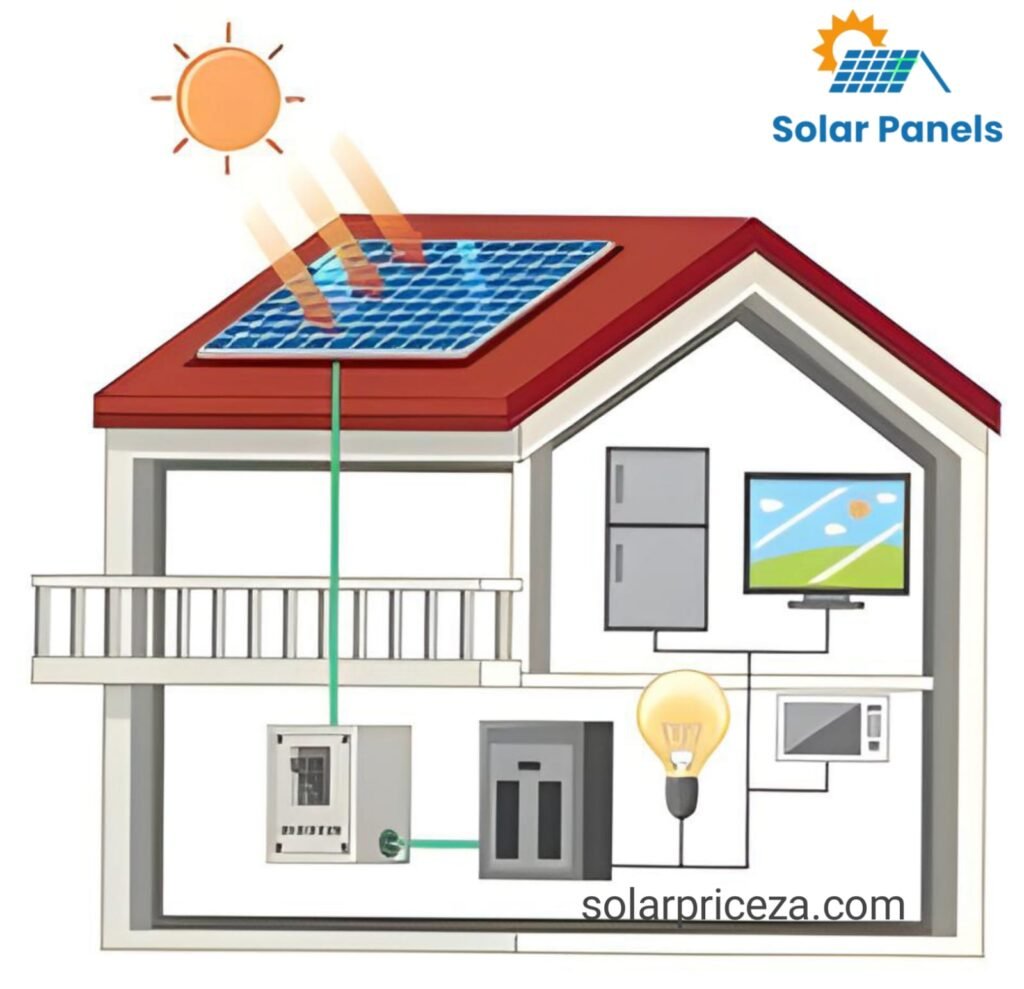Converting Sunshine to Power: How the Solar Cell Works
Understanding the inner workings of solar cells has become important in our effort to capture the sun’s plentiful energy to meet our expanding energy demands. This session describes the complex method of turning solar energy into electricity, highlighting the beauty of solar cells, explaining their operating characteristics, grouping various kinds of photovoltaic cells, and talking about silicon’s structure. It is drawing attention to significant characters. We will also look at the cost implications of using this age-old, scalable renewable energy source, as well as the operational challenges of solar panel installations.
What is a solar cell?
Solar cells, also known as photovoltaic (PV) cells, are a special kind of semiconductor that can convert sunlight directly into electrical power. It transforms light energy, or photovoltaic energy, into voltaic power. Solar cells are the fundamental parts of solar panels, which are frequently utilized in a variety of applications such as power plants, satellites, and residential buildings.
Semiconductors are materials specifically designed for use in solar cells. Because of silicon’s superior photovoltaic conversion, it is currently the most widely utilized semiconductor material. One of a solar cell’s primary roles is to allow light to bounce off electrons so they can move freely and generate electricity.
Types of Photovoltaic Solar Cells
Solar cells come in many types, distinguished primarily by the materials and processes used to make them.
1. Monocrystalline silicon (c-Si):
Among all photovoltaic technologies, these solar cells have the highest efficiency values since they are composed of a single silicon crystal. Because of the procedures required, they are somewhat more costly and are recognized for their uniform black appearance.
2. Polycrystalline silicon (mc-Si):
Many tiny silicon crystals make up these solar cells. They are a popular option for both residential and commercial applications while having a lower efficiency than monocrystalline line cells due to their relatively lower cost. The light diffused by several crystals is what gives these cells their unique blue or multicolored appearance.
3. Thin-film (TFPV):
To create thin-film solar cells, a very thin layer of semiconductor material is deposited or applied to the surface of glass, plastic, or metal. A few common types of thin-film solar cells include amorphous silicon (A-Si), copper indium gallium selenide (SiI), and silicon telluride (SiO). Although these cells are lighter, more flexible, and less expensive than crystalline silicon cells, their efficiency is lower, and they can be used for a variety of applications.
4. Multi-junction (MJ):
Multiple layers of semiconductor material, each intended to absorb a particular wavelength of light, make up multi-junction solar cells. This greatly enhances their performance, making them perfect for high-performance applications like air and space travel. They cost more to prepare and require greater complexity.
photovoltaic conversion process
What are the workings of solar energy? The interaction of light with semiconductor material atoms is the fundamental process of photovoltaic conversion. When light photons collide with a substance in the solar vacuum, the material absorbs enough energy to release electrons from its atoms, creating an electron-hole pair.
Solar cells purposefully build an electric field that pushes free electrons in a specific direction in order to produce electricity. The generation of voltage and current, comparable to this electric field, determines the capacity of the solar cell to produce power (or watts). In this way, light (or a type of light) transforms into electricity.
Role of Silicon in Solar Cells
Because of its special chemical characteristics, silicon is essential to solar cell operation. A silicon atom’s structure consists of 14 electrons grouped into three shells. In order for an atom to remain stable, it must share four electrons with neighboring atoms. Because of this characteristic, silicon can exchange and receive electrons, which allows it to automatically learn how to turn light into electricity.
The silicon in solar cells is typically “doped,” or processed to remove impurities, in more recent research and development to change its conductivity. One way to dope silicon is to introduce phosphorus (N-type silicon) or silicon (P-type silicon), which produce a large number of ‘holes’ and free electrons, alternately. Electric current flows through P-type silicon as a result of these free electrons of this silicon type when exposed to an electric field.
How do solar panels work?
A series of solar cells set in a frame and electrically connected to one another forms a PV solar panel. Even though each solar cell only generates a modest quantity of electricity, the power produced by several cells adds up.
Photovoltaic (PV) solar panels use the energy from the sun to free electrons from silicon atoms, which allows the atoms to move and generate electrical current. Solar panels function by determining the quantity of power that a solar cell can generate through its voltage and current.
PV solar panels produce direct-current (DC) electricity. All modern homes, however, need power that runs on alternating current (AC). Therefore, in order to convert solar electricity from DC to AC for everyday usage, it must first pass through an inverter. Different technologies have different practical efficiency when it comes to converting solar light into useful power; the best commercial panels have an efficiency of about 30%.
How Much Does a Solar Cell Cost?
Solar panel prices in South Africa can differ significantly based on brand, size, type, and installation expenses. The price range of a solar panel is R1,800.00 (360 watts) to R4,200.00 (550 watts). The cost of a standard 3kW solar panel installation will likely range from R45,000.00 to R70,000.00. A 5kW off-grid solar system can cost anywhere from R70,000.00 to R110,00.00 if that’s of interest to you.
The installer and the locality have an impact on these costs. Solar panels offer significant long-term savings by reducing or removing dependency on grid electricity, despite their high upfront price.
The total cost includes lifetime and care costs. When built and maintained correctly, solar panels can produce steady energy savings for up to 25 years or longer.
Conclusion:
To sum up, in order to fully utilize solar energy and transition to more environmentally friendly energy sources, it is important to understand how solar cells operate. The efficiency of different kinds of photovoltaic solar cells and solar panels depends heavily on silicon, which makes solar energy investments more and more alluring. The cheap cost of solar cells will make this clean energy technology more accessible as new trends move toward greener practices, bringing us closer to an eco-friendly future.
FAQ’s:
The solar panels typically consist of silicon or some other semiconductor material mounted in a metal panel frame with a glass casing. When sunlight exposes this material to photons (very tiny pixels of energy), it releases electrons and develops an electrical charge.
It may not be surprising to learn that solar panels are most efficient when they receive direct sunlight, but solar panels do not require direct sunlight to produce energy. Shadow, clouds, rain, and snow can reduce the output of a solar panel system, but both direct and indirect sunlight produces electricity.
Most commercially available solar panels have an efficiency of less than 23%, with an average range of 15% to 20%. Sun Power and Canadian Solar currently lead the industry with 22.8 percent efficient panels. This number may seem low, but keep in mind that solar cells use an input of free energy with zero emissions (sunlight).



